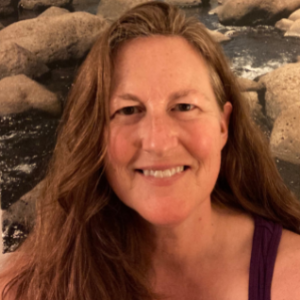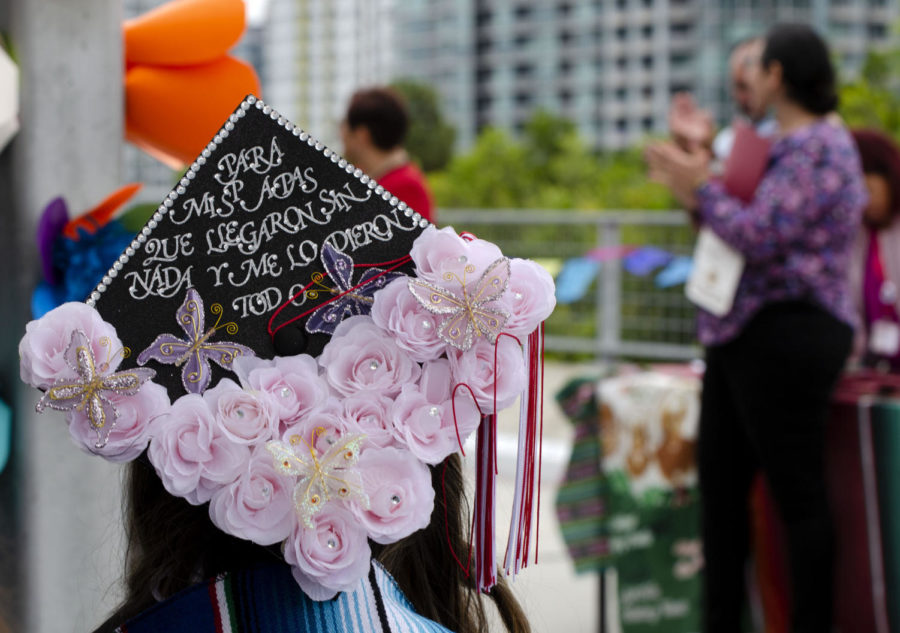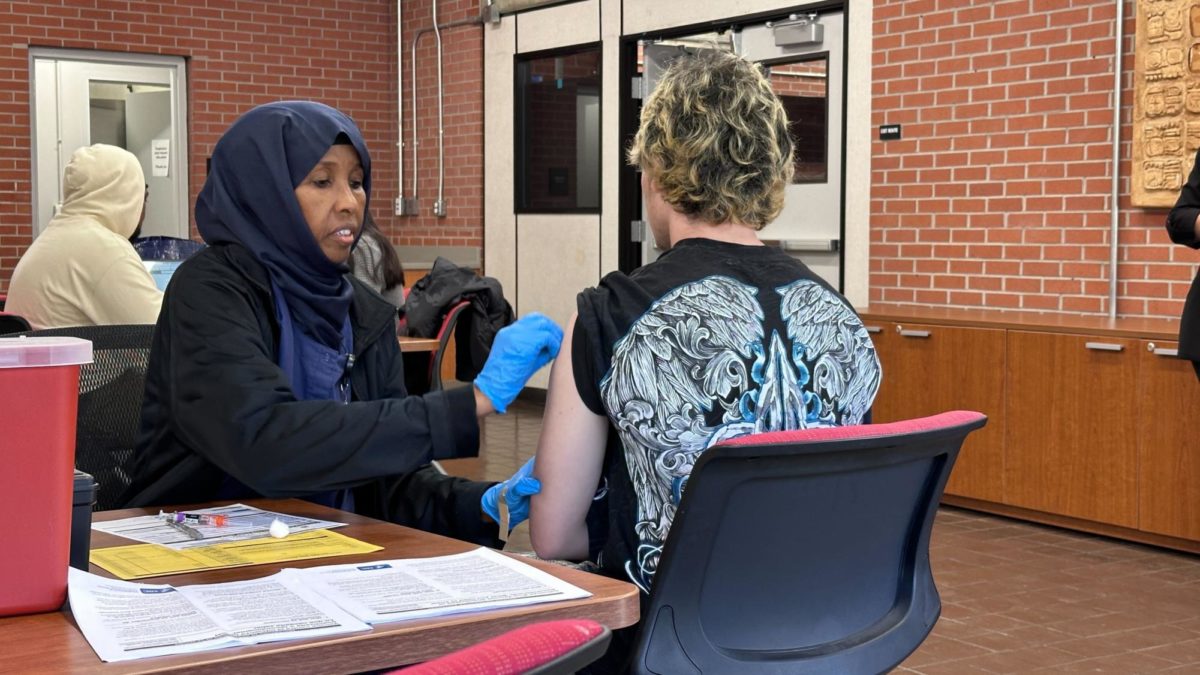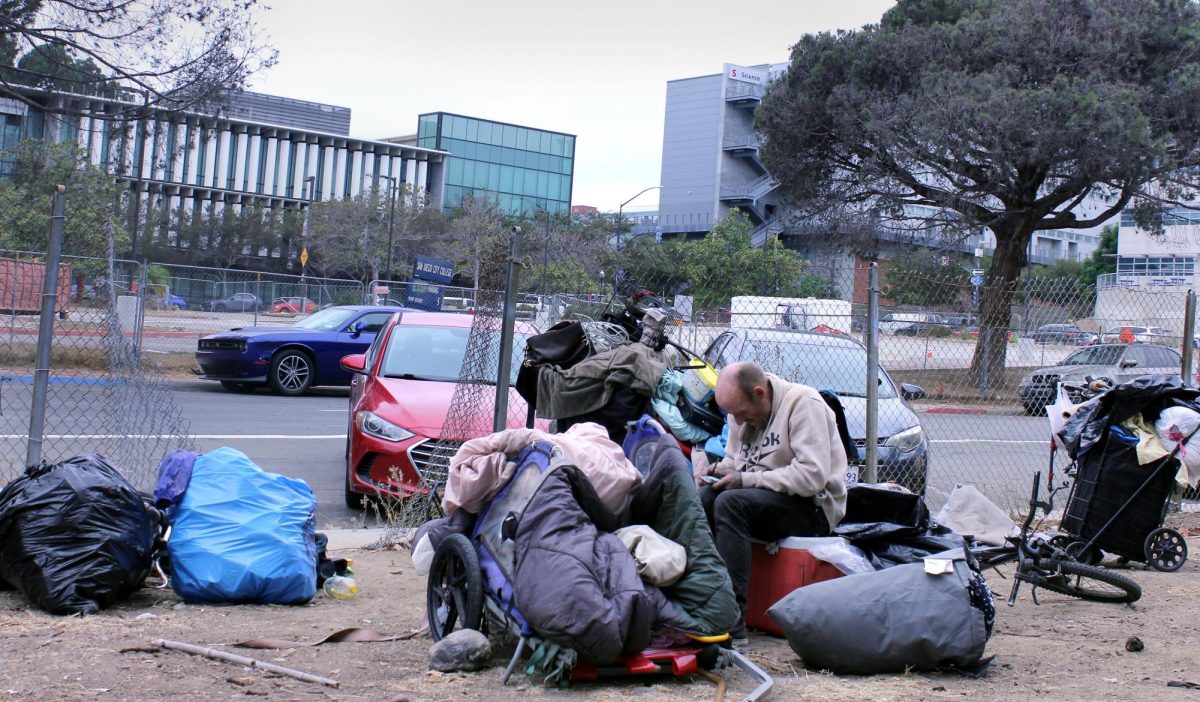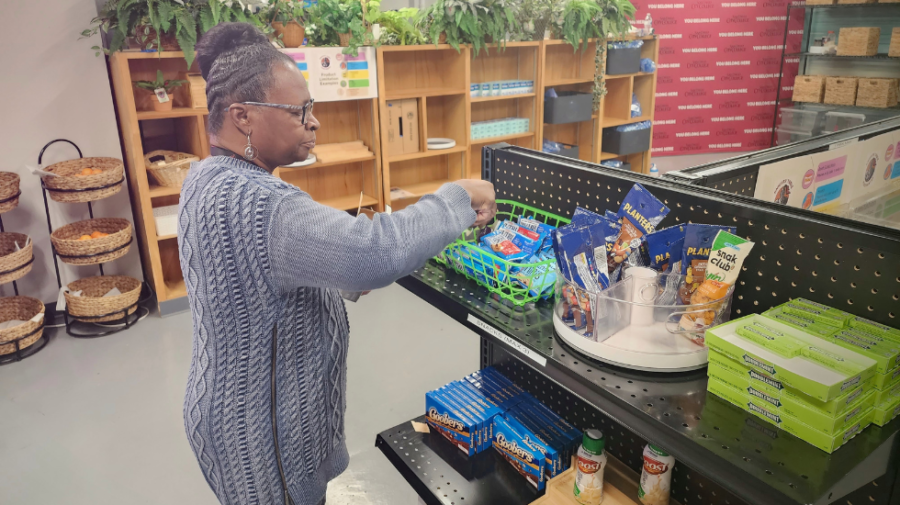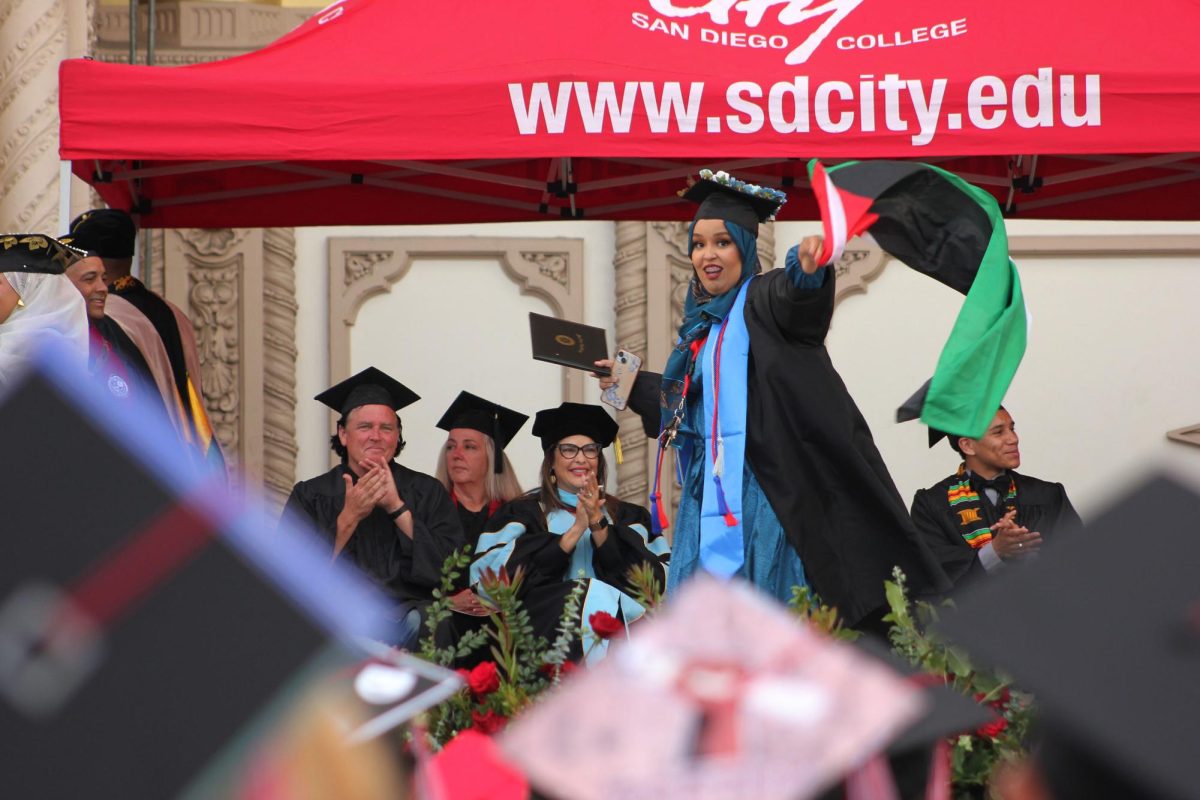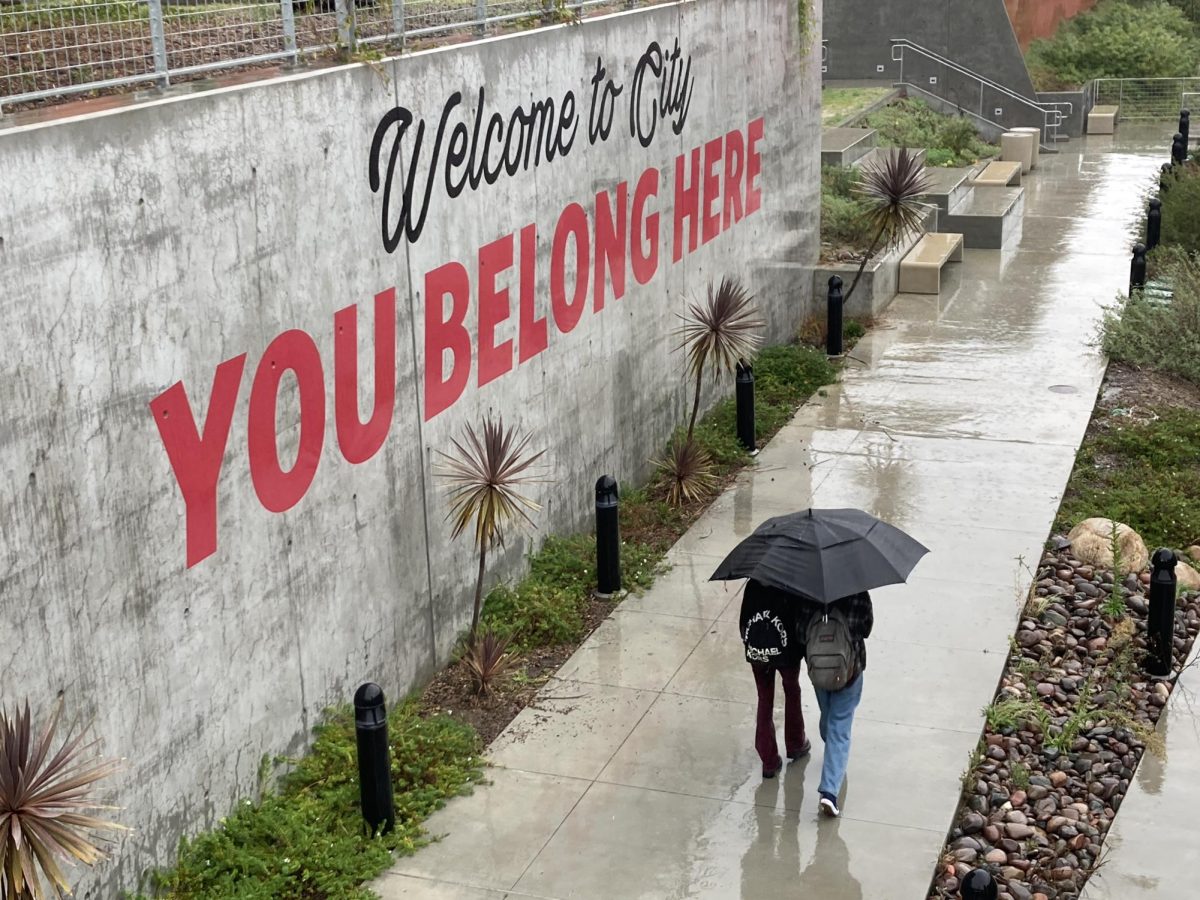San Diego Symphony players treat City College to a virtual concert
World Cultures event showcases classical performances and a conversation with the musicians
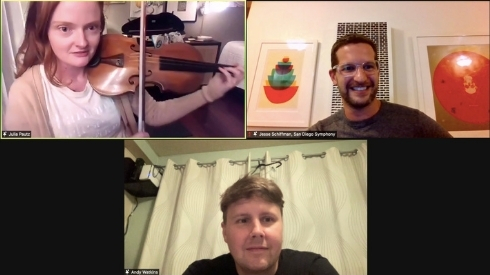
Julia Pautz demonstrates violin techniques she used while performing during a post-concert discussion with percussionist Andrew Watkins and Manager of Learning and Community Engagement for the San Diego Symphony Jesse Schiffman. Zoom screenshot
October 29, 2021
San Diego City College hosted a virtual concert on Oct. 27, treating viewers to an evening of San Diego Symphony performances from the comfort of their living rooms, including a peek behind the scenes.
The program balanced the rich, melodic lines of 19th century romantic composer Giovanni Bottesini’s Elegy No.1 for Bass and Piano with a lively piece for percussion and violin written in 2015 by Turkish-American composer Erberk Eryilmaz.
Mike Espar, assistant professor of music at City College, hosted the event and welcomed Jesse Schiffman, manager of learning and community engagement for the San Diego Symphony, who provided background on each of the three pieces performed.
Schiffman explained the Bottesini piece was performed by San Diego Symphony bassist Susan Wulff, and Espar added the pianist for the performance was an artificial intelligence robot accompanist.
Wulff employed AI software, enabling her to create the video from home during quarantine, Espar said.
Schffman said the software can sense when a performer speeds up or slows down and is able to make the adjustments in real time.
The final piece on the program, Eryilmaz’s Miniatures Set No. 6 for Violin and Percussion, was performed by violinist Julia Pautz and percussionist Andrew Watkins, both San Diego Symphony musicians. They then answered questions from the audience of over 60 attendees.
Pautz and Watkins described some of the challenges of rehearsing during a pandemic, which they did outdoors on Pautz’s back patio.
Wearing masks creates some difficulty communicating cues during a performance without a conductor, much of which is done with facial expressions, Watkins said.
“With the masks, I’m kind of relying on your eyebrows,” he said to Pautz.
He also explained some of the musical challenges of Eryilmaz’s composition, like balancing the volume of two very different instruments.
Drums, he said, can be quite loud, and could easily drown out another single instrument. In this case, it was Pautz’s violin. The composer provided detailed markings, including the instruction to use very small sticks, Watkins said.
The work also incorporated two other types of drums – a darbuka, which is common in North Africa and the Middle East, and a type of frame drum called a tar, which can be found all over the world, Watkins said. This piece used the version of a tar found in the Middle East and Turkey, he added.
Pautz also described some of the unusual notations in the Eryilmaz piece. During two of the movements, the composer uses arrows near certain notes to indicate they should be played slightly flat, she said.
“It’s not a C sharp,” Pautz said, “it’s not a C natural. It’s some sort of wishy-washy thing that my teacher would say ‘no way.’”
Pautz then brought out her violin and demonstrated the difference between the sounds.
“It makes it feel less Western and more, sort of, rustic like someone who hasn’t been contaminated with the sense of keys that we typically use,” Pautz added.
The middle piece on the program was the first movement of String Quartet No. 6 by German composer Felix Mendelssohn. Schiffman described him as a prodigy composer and explained that a string quartet is a piece composed for two violins, viola and cello.
Espar said this was the third year City has partnered with the San Diego Symphony. The first year was on campus at the Saville Theatre, with the forum shifting to a Zoom event last year.
All of the performances included in this event can be found on the San Diego Symphony’s YouTube channel. A recording of the Zoom event is available here.
Other virtual events from the San Diego Symphony can be found on the Symphony Stream portion of its website.
The next World Cultures event, “Behind The Grind: Exploring the Chemistry of Coffee” will be held on Nov. 3. More information can be found on the World Cultures Program website here or on their Instagram page here.


